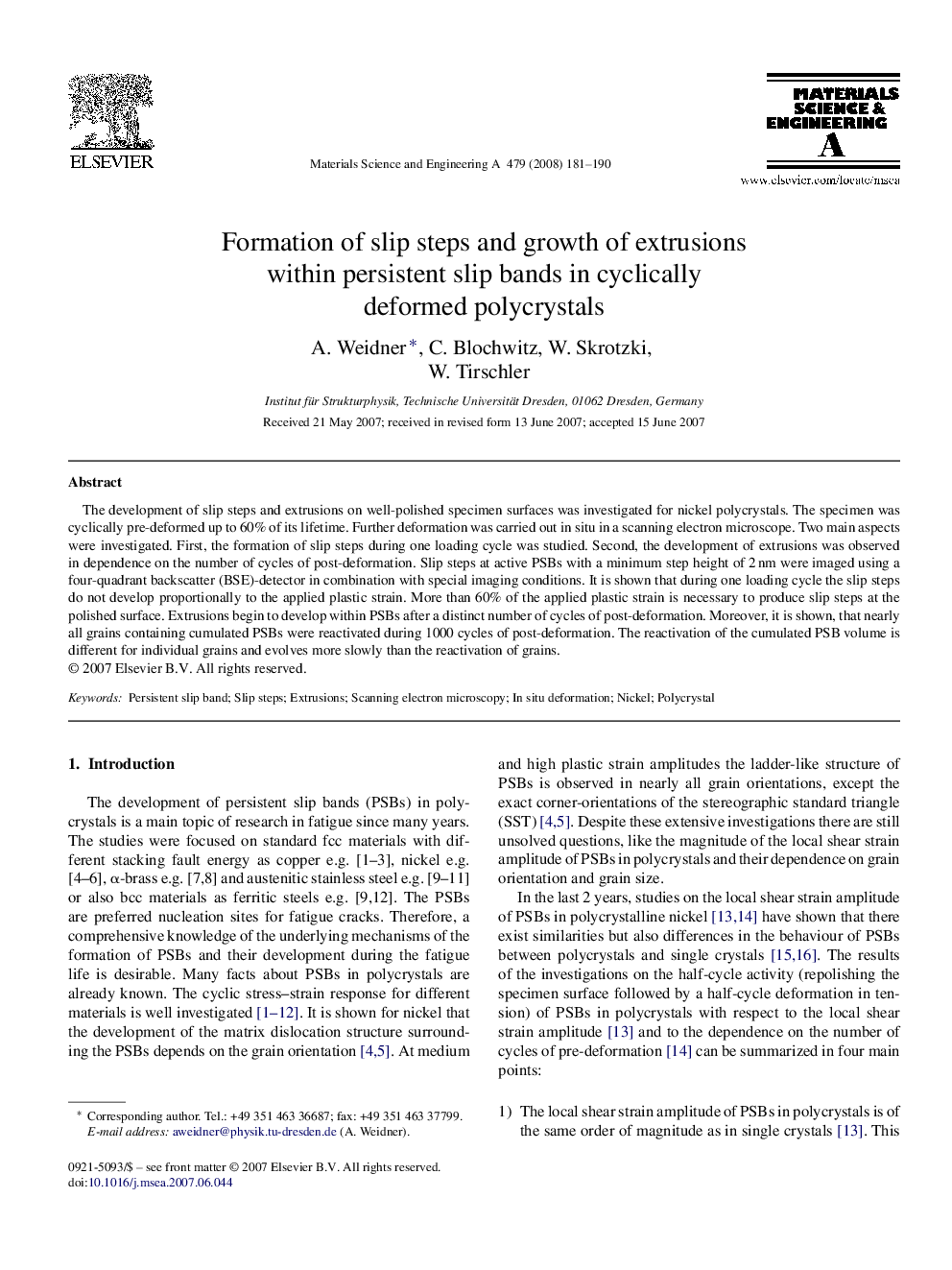| Article ID | Journal | Published Year | Pages | File Type |
|---|---|---|---|---|
| 1582948 | Materials Science and Engineering: A | 2008 | 10 Pages |
The development of slip steps and extrusions on well-polished specimen surfaces was investigated for nickel polycrystals. The specimen was cyclically pre-deformed up to 60% of its lifetime. Further deformation was carried out in situ in a scanning electron microscope. Two main aspects were investigated. First, the formation of slip steps during one loading cycle was studied. Second, the development of extrusions was observed in dependence on the number of cycles of post-deformation. Slip steps at active PSBs with a minimum step height of 2 nm were imaged using a four-quadrant backscatter (BSE)-detector in combination with special imaging conditions. It is shown that during one loading cycle the slip steps do not develop proportionally to the applied plastic strain. More than 60% of the applied plastic strain is necessary to produce slip steps at the polished surface. Extrusions begin to develop within PSBs after a distinct number of cycles of post-deformation. Moreover, it is shown, that nearly all grains containing cumulated PSBs were reactivated during 1000 cycles of post-deformation. The reactivation of the cumulated PSB volume is different for individual grains and evolves more slowly than the reactivation of grains.
